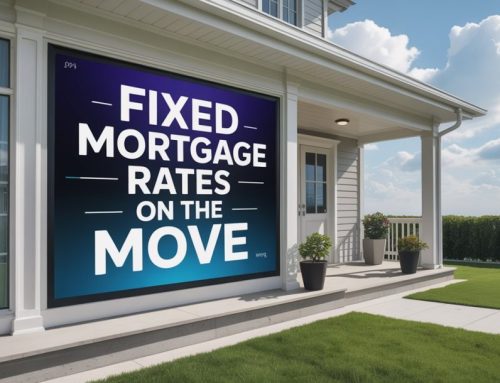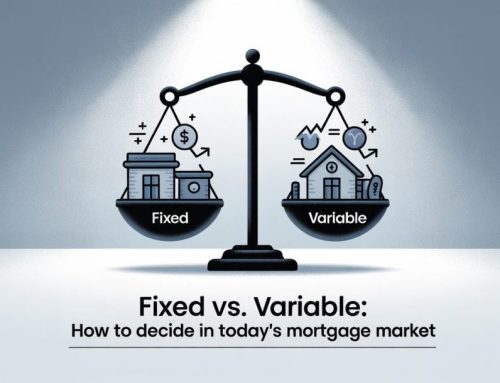Unless you’re new to the world of mortgages, you’re likely aware that the minimum down payment to avoid mortgage default insurance is 20%. What many may not be aware of is that a down payment of greater than 20% down payment will sometimes be required.
For the most part, 20% will be sufficient. However, there are times where you may encounter a sliding scale, which can increase the minimum down payment requirement substantially. This can catch some people off guard. Fortunately, you’re reading this blog, so you will not fall into that group.
What Is A Mortgage Sliding Scale?
A sliding scale is where the minimum down payment changes once the purchase price hits a predetermined threshold. A lender will accept the standard 20% down payment, but only up to a certain value. Once the purchase price exceeds this value, a higher down payment is required on the excess amount. For example, a lender may accept a 20% down payment up to the first $1 million, but may require a 50% down payment for any amount above $1 million. This is what is known as a mortgage sliding scale.
What Is The Purpose Of A Sliding Scale?
It’s directly related to the lender’s risk. The higher the purchase price, the more the value can fall if the housing market were to correct. A sliding scale gives the lender added protection, and therefore reduces their risk. When a market correction occurs, it does not correct evenly. Some areas will see a much larger drop than others. Higher valued properties may also see a larger correction. A $5 million home for example has much more room to fall than an $800,000 home. A $5 million home also appeals to a smaller demographic, and can take longer to sell even in the hottest housing markets.
There are two major factors that can trigger the use of a sliding scale:
- High purchase price
- Property location
High Purchase Price
Sliding scale policies will vary from lender to lender, with the more stringent adhering to the example used above. They will allow a 20% down payment only up to the first $1 million of the purchase price, but will require a 50% down payment on the amount above $1 million.
This means the minimum down payment to purchase a $1.5 million property would be $450,000.
$200,000 for the first $1 million, and then another $250,000 for the additional $500,000.
While some mortgage lenders are this strict with their sliding scale policy, most lenders are more flexible.
What is the maximum purchase price you can hit without requiring a down payment over 20%?
The higher you go above $1 million, the fewer lending options become available. If you’re purchasing in a major metropolitan area such as the GTA or GVA, you can generally go up to a purchase price of around $2 million without triggering a sliding scale. In some cases even higher. The higher you go, the fewer lending options become available. This doesn’t mean you’ll be paying a higher rate, and excellent mortgage rates may still be available to you. Exceptions can sometimes be made to exceed a lender’s sliding scale limit, however these are granted on a case by case basis. The more demand for the area and the stronger the borrower, the easier it becomes for us to press it higher.
Note that the sliding scale limits may be reduced for condos, and policies will vary from lender to lender. If you are purchasing a condo for more than $1 million, it’s best to check with us first before putting in an offer to purchase.
Property Location
Another major consideration is the location of the property. The further you purchase outside of a major centre, the more stringent the sliding scale may become. In some cases, the sliding scale may start as low as $500,000, which is not uncommon. If you were looking at purchasing a $750,000 cottage for example, the lender may only accept a 20% down payment up to $500,000, with a 50% down payment required for the additional $250,000. This would result in a minimum down payment of $225,000, or 30%. The sliding scale requirements can vary substantially depending on the location.
This is where it gets interesting.
If you are purchasing with LESS than 20% down payment in a rural area, you can go up to $999,999 without running into sliding scale issues. I know this sounds counter intuitive, and flat out defies logic. This is because a down payment of less than 20% requires mortgage default insurance such as CMHC. This gives the lender the additional protection they need and reduces their risk, therefore it eliminates the need for a sliding scale.
Conclusion
It’s not just ‘some’ lenders who have a sliding scale policy.
They all do.
It doesn’t matter if you’re applying to a major bank, credit union, or monoline lender. They all use sliding scales.
Anytime you are planning on purchasing a property, never assume you’ll be okay because you have a 20% down payment. As long as you are purchasing in a major metropolitan area such as the GTA or GVA, then you should be okay with a 20% down payment on a purchase up to $1 million. If your budget is over $1 million, you’ll definitely want to check with us first to ensure we won’t run into any sliding scale complications.








Leave A Comment